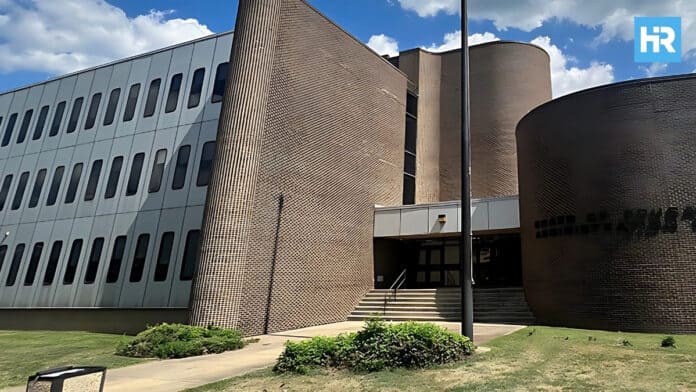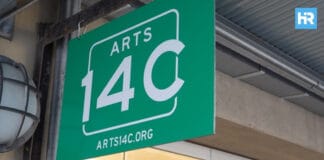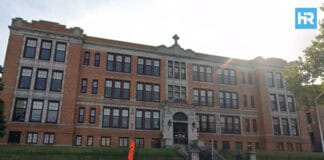If you’re a parent in New Jersey, chances are you’ve already googled ‘best school districts in NJ’ more than once. Maybe you’re thinking about moving. Perhaps you’re already living in a good district, but you’re wondering: is there something better out there?
Well, as you can imagine, there’s no single “perfect” district—no matter what a spreadsheet or ranking site tells you. What looks top-tier on paper might feel too competitive for your child. Or, a smaller district you’ve barely heard of could offer exactly the kind of support and enrichment your kid thrives in. That’s why this guide is a breakdown of what makes each of the leading districts unique, based on the latest data from Niche.
At the end of the day, finding a district where your child feels safe, challenged, supported—and maybe even excited to go to school, is all that matters.
Northern Valley Regional High School District (Demarest)
Northern Valley Regional in Demarest is ranked the #1 public school district in New Jersey, according to Niche’s 2025 report. It earns that top spot with its strong academic performance, college credit access, and a smaller-scale environment that some families will prefer over larger districts.
The district serves just over 2,200 students across three schools and keeps a student-teacher ratio of 11:1. That’s lower than what you’ll find in West Windsor-Plainsboro or Livingston, and it can make a difference—especially for students who do better with more direct support in the classroom.
One of Northern Valley’s biggest strengths is its approach to college readiness. Students have access to 55 dual-enrollment options through partnerships with Bergen Community College, NJIT, Seton Hall, and Fairleigh Dickinson—a large number—more than many other top-ranked districts offer—and it gives students a chance to earn college credit before they graduate.
Advanced Placement courses are also widely available here. 87% of students are enrolled in AP classes, which shows how much the district encourages academic stretch. And based on test scores, students are doing well: 57% are proficient in math, and 72% in reading—both are above the state average.
Outside of academics, the district offers over 60 student clubs and more than 20 varsity sports. Recent state titles in volleyball and tennis reflect the strength of the athletics program, but, beyond competition, there’s support for a wide range of interests.
What Makes This District Unique
- One of the only public districts in NJ where college-level courses are part of the mainstream track
- Maintains intensive academics (87% AP enrollment) while staying non-selective and accessible
- Leverages its smaller size to create a predictable academic structure without sacrificing opportunity
- Offers real pathways into college without needing to leave the public system or apply to a magnet
Best For
- Parents who want college credit opportunities built directly into the public school experience — no need for early college programs or magnet applications
- Students who benefit from consistent structure and strong teacher access — especially those who prefer smaller class sizes and defined academic tracks
- Families who prioritize readiness for college admissions — and want AP, dual-enrollment, and advising to be part of the default school experience, not something you have to push for
Millburn Township School District
Millburn has a long-standing reputation for academic strength, and it’s still one of the best NJ school districts—ranked #3 statewide in Niche’s 2025 report. Families looking for high performance in a traditional, structured public school setting will find a lot to like here.
It serves just under 4,800 students across eight schools, with a 13:1 student-teacher ratio—slightly higher than smaller districts like Northern Valley, but still in a range that allows for direct support and classroom engagement.
Test scores here are among the strongest in the state: 77% of students are proficient in math, 86% in reading, and the average SAT score is 1410. The graduation rate sits at 98%, and ACT scores average 32, which is notably high even compared to other top-performing districts.
Millburn High School offers 30 AP courses, and while fewer students take AP overall compared to some peer schools (38% participation), those who do tend to succeed—a 97% pass rate.
Unlike districts that have invested heavily in dual-enrollment programs, Millburn has stayed focused on traditional classroom instruction and test-based college preparation—a model that works for a lot of students—especially those who prefer clear structure and steady academic expectations.
Millburn students have access to loads of extracurriculars, including academic teams like robotics and math league, a performing arts program, and community service groups. Most activities are tied closely to academic or professional skill-building, which fits the school’s overall emphasis on preparation and performance.
What Makes This District Unique
- Prioritizes traditional academic performance over program variety — no dual enrollment, no alternative tracks
- Offers deep AP course options (30 total), with a 97% pass rate — success is prioritized over participation volume
- One of the highest average SAT (1410) and ACT (32) scores in the state
- Consistent performance across schools with tight academic expectations and a clear college-prep focus
- Emphasizes structured, test-based achievement over flexible learning paths
Best For
- Students aiming for highly selective colleges and who perform well in structured, exam-based environments
- Families who want a school where academic rigor is the priority, and where nearly every course, club, and extracurricular supports college admissions
- Parents looking for measurable academic outcomes — like a 1410 SAT average and 97% AP pass rate — rather than broad programming or alternative tracks
Bonus: Have you been to the best 10 places to visit in New Jersey?
Princeton Public Schools
Princeton Public Schools is ranked #2 in Niche’s 2025 list of the best NJ school districts. It earns that position not by maxing out on test prep or rigid structure, but by offering high academic standards in a district that still leaves room for exploration.
The district serves about 3,800 students with a student-teacher ratio of 11:1, and the numbers are strong: 1370 SAT average, 31 ACT, and 75% reading proficiency. Math proficiency is slightly lower at 58%, but still well above the state average.
It has to be said that Princeton is different in how it handles advanced coursework. Students can choose from 24 AP classes, and 51% of high schoolers do, but the district doesn’t push AP enrollment as a badge of success. It rather focuses on making sure students who take APs are prepared—which shows in the 98% AP pass rate. That’s a higher success rate than Millburn, despite Princeton having a less aggressive approach to AP participation.
Princeton’s extracurricular scene is where a lot of students find their stride. The performing arts program is unusually strong for a public district, with consistent support and high turnout across schools. Academic and civic clubs are just as active—students regularly qualify for national competitions in science, debate, and the humanities, giving kids serious outlets to explore beyond the standard curriculum.
And then there’s the location. Being based in a university town gives students access to public lectures, events, and enrichment that other districts simply don’t have.
While it’s not a formal partnership with Princeton University, students benefit from programs like the Princeton University Preparatory Program (PUPP), which offers rigorous academic and cultural enrichment to high-achieving, low-income high school students from local districts.
Additionally, the Emma Bloomberg Center for Access & Opportunity provides summer programs that prepare first-generation and lower-income students for college success.
Here, students are expected to take their work seriously—but they’re not micromanaged. That’s a good thing for kids who want to stretch without being boxed in.
What Makes This District Unique
- AP participation is optional — but those who take them succeed: 98% AP pass rate across 24 courses
- One of the only districts where students benefit from proximity to a major university — access to Princeton University events, talks, and academic programs adds real-world depth
- Strong across academic subjects, but also especially strong in the arts, writing, and civic programming — national-level success in humanities competitions reflects that
- Runs on structure, not strictness — students are expected to perform, but given room to explore
Best For
- Families with academically strong students who prefer autonomy over constant oversight
- Students interested in liberal arts, writing, or performing arts, who want access to well-supported programs and national competitions
- Parents who want their child to benefit from living in a university town, where enrichment opportunities and academic exposure extend far beyond the classroom
West Windsor-Plainsboro Regional School District
Ranked #5 in Niche’s 2025 list of the best schools in New Jersey, West Windsor-Plainsboro is one of the few large districts on this list—and still manages to offer structure, flexibility, and high-level academics without getting impersonal.
The district serves just under 9,400 students across ten schools, including two high schools: WW-P North and WW-P South. The 12:1 student-teacher ratio is better than average for a district this size, and both schools consistently perform near the top of the state in testing. Students average a 1400 SAT and 31 ACT, and the graduation rate is over 95%.
Advanced Placement is a real strength here. Both high schools offer a wide selection—25+ AP courses, including AP Physics C, AP Computer Science A, AP Economics, and AP Statistics. Participation is high, and AP pass rates are strong—95% at South and 96% at North, according to Niche. Course guides emphasize access rather than gatekeeping, and there are clear systems in place for students to map out multi-year academic paths based on their goals.
Outside the classroom, extracurriculars are well-established and well-funded. WW-P South’s Model UN team is nationally ranked and regularly competes at high-profile conferences. The orchestra and band programs are among the most competitive in New Jersey, with students performing at regional and state-level festivals every year.
WW-P also benefits from being one of the most diverse public school districts in the state, which is reflected in its leadership programs, student initiatives, and parent engagement.
What Makes This District Unique
- Over 25 AP courses are offered, with strong participation and access across both high schools
- SAT and ACT scores among the top in the state: 1400 and 31 averages
- Nationally ranked Model UN team and award-winning performing arts programs
- One of NJ’s most diverse districts, with programming that reflects it
Best For
- Students who want to excel in academics but also have space to pursue music, Model UN, or long-term extracurricular commitments
- Families who want a top academic district without the rigidity of Millburn or the smaller scale of Northern Valley
- Parents seeking a diverse public school community where high test scores and strong arts programming can go hand in hand
Tenafly Public Schools
Tenafly ranks #6 in New Jersey for overall district performance in Niche’s 2025 report. With just under 3,500 students and a student-teacher ratio of 11:1, it’s one of the smallest high-achieving districts on this list—and that size shapes everything from classroom access to how programs run.
Academically, Tenafly students post standout results: the average SAT score is 1350, ACT is 30, and the graduation rate is 98%.The high school offers 20+ AP courses, and while AP enrollment isn’t as aggressive as Northern Valley or Millburn, the district maintains high pass rates and clear course support.
Among the top schools in NJ, Tenafly stands out for how it handles global education. Nearly half the students speak a second language at home, and that diversity is built into the curriculum—not solely demographics. Language instruction starts early, and multicultural programming runs through every grade.
Clubs and extracurriculars reflect that same approach: more than 50 student-led organizations and 25 varsity teams, with a heavier emphasis on academics, music, and civic groups than on high-profile athletics. The orchestra program consistently earns statewide recognition, and arts funding holds up well from elementary through high school.
Compared to Ridgewood or Livingston, Tenafly doesn’t offer the same size or range—and it doesn’t have dual-enrollment options like Northern Valley. But for families looking for a quieter, high-performing district with a global perspective and day-to-day structure, this is one worth considering.
What Makes This District Unique
- One of the smallest academically elite districts in NJ, with just 3,487 students and an 11:1 ratio
- Strong test scores without the high-pressure culture
- Early language education and real multicultural integration — nearly 50% of students speak a second language at home
- Stronger in music and academic programming than athletics — the orchestra is a standout here
Best For
- Parents moving from private to public school who still want small class sizes and a close-knit academic setting without sacrificing results
- Students who may feel out of place in ultra-competitive districts but still want strong outcomes — Tenafly is structured, but not high-pressure
- Multilingual families or international professionals seeking a school community where cultural diversity is the norm and not a sidebar
Choosing the Best School District in New Jersey
Naturally, there is no universal “best”—only what’s best for your family, your student, and your priorities.
Every one of these districts delivers results. But the real question is what kind of experience you want your child to have on the way there.
Use this breakdown to cut through the noise, narrow your list, and you’ll be one step closer to finding the best district for your family.
P.S. Perhaps you’re moving to the Garden State; if so, here’s what every home buyer in NJ needs to know.






